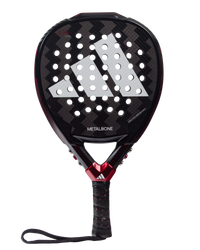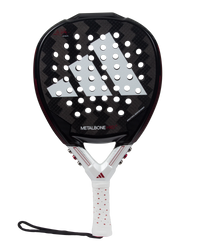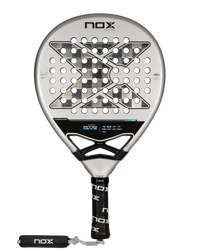Unlike tennis rackets, which often require frequent string changes, up to multiple times a week for professional players, padel rackets appear to be more durable. However, this doesn't imply that your pala will endure indefinitely. Exploring the reasons behind racket replacements and the indicators signaling the need for a new one unveils crucial insights for padel enthusiasts.
A glimpse into the history of padel rackets reveals a transformative journey. Initially crafted from wood, early padel rackets boasted durability but lacked the desired attributes for optimal sensations and athletes' security. The advent of foam, carbon, and fiberglass compositions revolutionized padel rackets, enhancing player experience by reducing vibrations and improving performance. The evolutionary leap from antiquated wooden constructs to contemporary designs parallels the advancement from ancient tools to modern sports equipment.
However, just like padel balls, the composition of padel rackets renders them susceptible to wear and tear over time.The progressive degradation of materials, decline in elasticity, and heightened susceptibility to breakage emphasize the finite lifespan of padel rackets.
We should mention that caution is warranted when considering second-hand rackets, as external appearances can belie internal wear and tear accumulated through undisclosed usage.
The frequency of racket replacement varies based on usage intensity. While recreational players may find annual replacements sufficient, professional athletes engaged in daily training demand more frequent upgrades. Inspecting signs of diminished performance, such as decreased response, heightened vibrations, or reduced power, serves as a reliable indicator for racket replacement. Proactive checking, rather than waiting for failure, ensures security and sustained performance levels. As most surveys show, regular players usually tend to change their palas approximately every six months.
Moreover, evolving gameplay style and skill levels necessitate periodic reassessment of racket suitability. Aligning racket selection with individual attributes, including playing level, style, and athleticism, ensures optimal performance alignment. Seasonal adjustments, such as transitioning to rackets with different balance or hardness, allow you to benefit from perfect sensations all-year-round. Indeed, foam tends to become softer when temperatures rise, which is why some players use soft rackets in winter and harder rackets in summer. For instance as a player who prefers light rackets, you could use Head Radical Motion in winter and Head Extreme Motion in summer.
Also, as your technical level rises, you may for example consider opting for a more powerful racket that will allow you to make your newly acquired offensive shots more lethal. If we may offer you a piece of advice for your further progress: don't linger too long with a pala. Unlike tennis rackets, which often require frequent string changes, up to multiple times a week for professional players, padel rackets appear to be more durable. However, this doesn't imply that your pala will endure indefinitely. Exploring the reasons behind racket replacements and the indicators signaling the need for a new one unveils crucial insights for padel enthusiasts.
To maximize racket longevity, attention to maintenance and quality is paramount. Avoiding prolonged exposure to sunlight and minimizing impacts against hard surfaces mitigate structural degradation. Opting for resilient materials like carbon or graphene enhances durability and performance resilience. Partnering with reputable brands underscores product quality assurance, ensuring optimal player satisfaction and longevity.
At padelusa.com, our dedication to excellence includes carefully selected offerings from top industry brands, ensuring that discerning players have access to premium padel rackets. Buying from our website will ensure you get high-quality rackets, with a guarantee.











